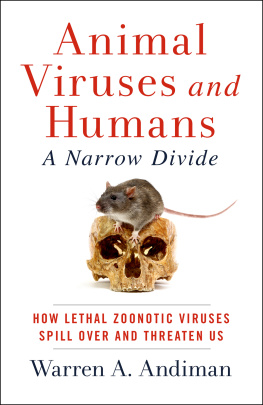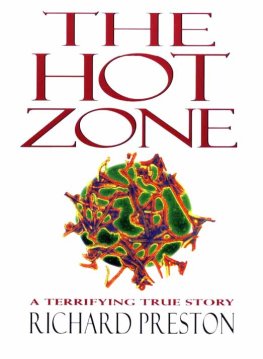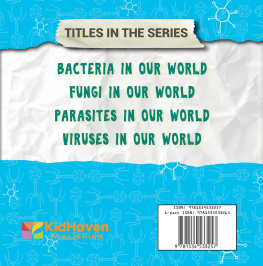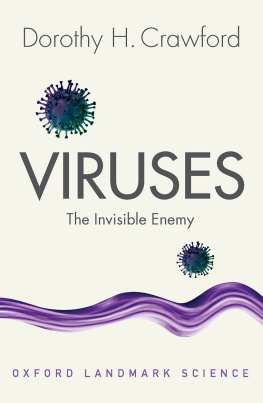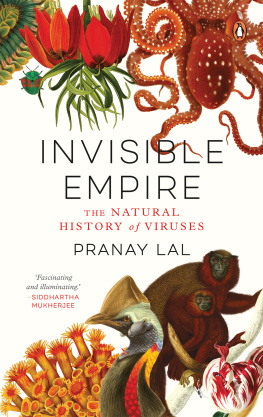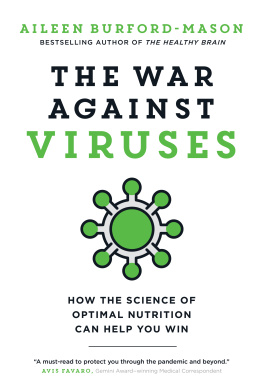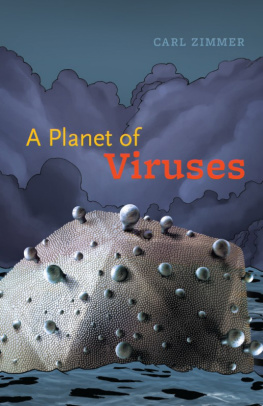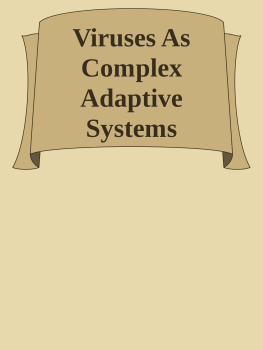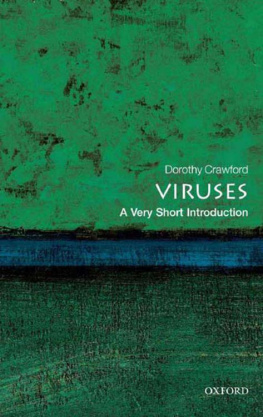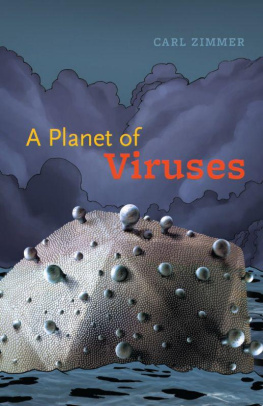

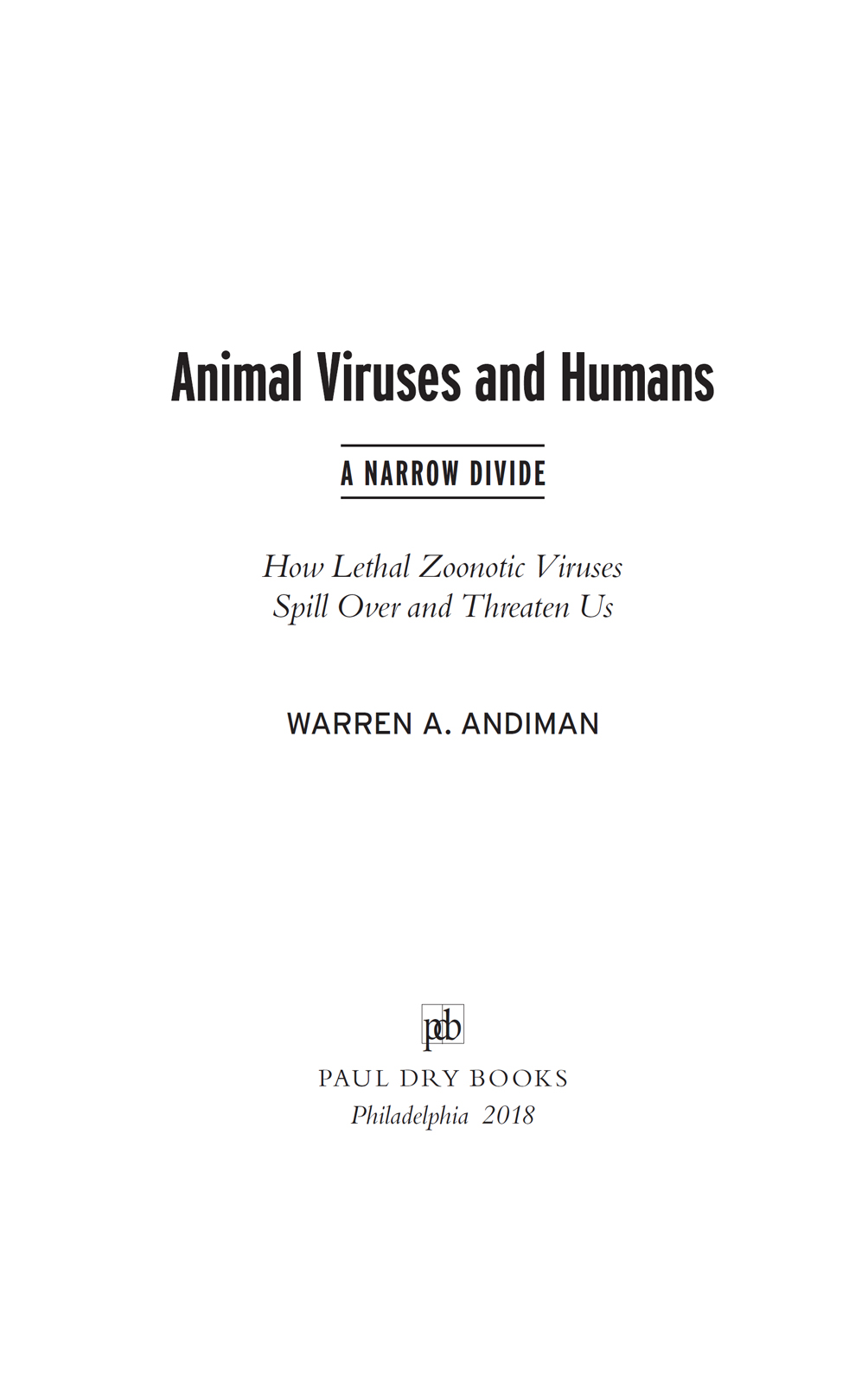
First Paul Dry Books Edition, 2018
Paul Dry Books, Inc.
Philadelphia, Pennsylvania
www.pauldrybooks.com
Copyright 2018 Warren A. Andiman
All rights reserved
Printed in the United States of America
ISBN 978-1-58988-122-8
eISBN 978-1-58988-330-7
To my wife, Marie,
and my daughters, Sarah and Alexis,
whom I love and greatly admire
for their intelligence and selfless devotion
to their fellow human beings.
They have always encouraged me
to do my best work
and taught me to seek after
my better self.
CONTENTS
MERS (Middle East Respiratory Syndrome)
Swine Influenza
Hantavirus
Monkeypox
SARS (Severe Acute Respiratory Syndrome)
Viruses Rule!
Rabies
Ebola Virus Disease
Nipah and Hendra Viruses
Everybody knows that pestilences have a way of recurring in the world; yet somehow we find it hard to believe in ones that crash down on our heads from a blue sky.
Albert Camus, The Plague
That human health and Earths health are intertwined can sound like a truismmore of a bumper sticker or poetic truth than scientific fact. Yet a growing body of research suggests that disrupted ecologies may indeed produce more disease.
Brandon Keim, Anthropocene Magazine, December 14, 2016
All is flux, nothing stays still.
Heraclitus, c. 540480 B.C.
Viruses are obligate intracellular parasites; that is, they can replicate only within the confines of living animal or plant cells, bacteria included. Once they gain entry to a cells interior, they hijack many of its rich biochemical offerings and spread by one of three ways: by producing hundreds or thousands of progeny that bud from the cells surface membrane; or by inducing the fusion of adjoining cells so they can move into neighboring property as the membranous barrier between cells melts away. Some viruses completely destroy the cells in which they reproduce and thereby find sanctuary in the juices between cells or in the blood and lymph, whereupon they can move to wherever the bodys life blood (literally) carries them.
Thousands of known virus species have evolved since life first appeared on Earth. They have adapted their parasitic lifestyles to thousands of living species. Their sole purpose is to reproduce and spread, as is the case for many higher life forms. As a result, some have developed the capacity to jump from one species to another, thereby expanding their ecological range in true Darwinian fashion as they continue to mutate and slowly acclimate to new intracellular milieux.
The arboviruses have found a way to travel among animal species by hitching a ride inside insects. These highly mobile vectors of disease take a blood meal from their animal reservoirscattle, pigs, birds, bats, monkeys, etc.and transmit teeming blood-borne virus herds to other animals. Some of these animals happen to be humans who find themselves in proximity to the creatures that passively serve as the source of their infection. In contrast, some viruses travel directly from animal to animal or from animal to human being without an insect interloper. (A famous story tells of Joseph Meister, the boy who acquired rabies from the bite of a dog and who was cured by Louis Pasteur in 1885; no mosquitoes, ticks, or mites played a role.) The journey among animals is eased when people, sub-human mammals, and birds live or work in close quarters. Because vocations, recreations, and ecological niches vary greatly from place to place, the kinds of animal vectors and the conditions under which virus transmission occurs also vary greatly.
The viruses and diseases, the zoonoses, Ive chosen to write about in this book are characterized by a direct mode of the spread of infection from animals to humans, and by the great variety in place of origin and the mix of animal species involved. These examples are meant to describe only a small sample of what is already out there but, more menacingly, what is inevitably on its way, in forms we can only imagine.
HIV, the human immunodeficiency virus, is one of the most recent and, doubtless, the most terrifying of these zoonoses. Several readers of early drafts of this book asked why I did not include HIV. My response, perhaps wrong-headed, was that HIV/AIDS and its history of pestilence and death were already familiar to many people and that I wanted to expand their horizons by providing stories of other zoonosesones that have already maimed and killed and that might someday break free, should the right combination of brief encounters take place.
HIV-induced disease is a paradigm of a series of random animal-to-human transmission events. There are actually two AIDS viruses, HIV-1 and HIV-2, both members of the lentivirus family, a group of pathogens shared by monkeys, apes, and human beings. Its believed that a sequence of significant cross-species lentivirus transmissions began only in the past century or two, this despite the fact that Old World simian lentiviruses have evolved along with their host species for millions of years. There are at least ten simian immunodeficiency viruses, each related to a different simian species. SIVcpz, the chimpanzee virus, and SIVgor, the gorilla virus, are the two candidates that ultimately made their way to humans. Transmission is thought to have occurred through cutaneous or mucous membrane exposure to ape blood or other body fluids in the course of hunting and eating bushmeat.
A number of worthy writers and journalists have covered aspects of these sorts of events in the last several decades. Much of their focus has been on the social and environmental conditions that create the settings in which viruses can easily jump from animals to humans and then, more ominously, among their human hosts. These writers have sometimes targeted viruses whose very names are so familiar as to make us stand at attention: Ebola, avian influenza, and Lassa fever, among others. But as a physician trained in clinical and diagnostic virology and as a clinician on the front lines, I felt obliged to introduce readers to the magical and mysterious world of the viruses themselves: how they look and how their very structure and molecular make-up allow them to parasitize the cells of their mammalian and avian hosts so efficientlyand thereafter, to cause more generalized disease. Having invaded their prey, how do viruses then take hold of the cells complex machinery in order to fulfill their sole raison dtre, that is, to reproduce promiscuously and to wreak havoc wherever they can find a home? In addition, I describe some of the physical manifestations of viral attack. I do this with some trepidation because the pictures I paint are far from pretty. Many of us get a bit of a kick out of being scared and even horrified, so I believe there is some value in having readers understand the consequences of allowing these diseases to cross international borders and to move uninhibited into our hospitals, neighborhoods, homes, and bodies. The recent epidemic of Ebola virus disease has given us a glimpse into the terrors unleashed by these super-sub-microscopic beasties. Finally, I will briefly revisit some of the lifestyles and habits that bring members of our own species into intimate contact with representatives of other species. We not only depend on animals for food, which brings us close to their very flesh and blood, but we also love animals, which brings us into contact with their secretions and excretions in a manner not unlike that of the humans we love and nurture.
Next page
